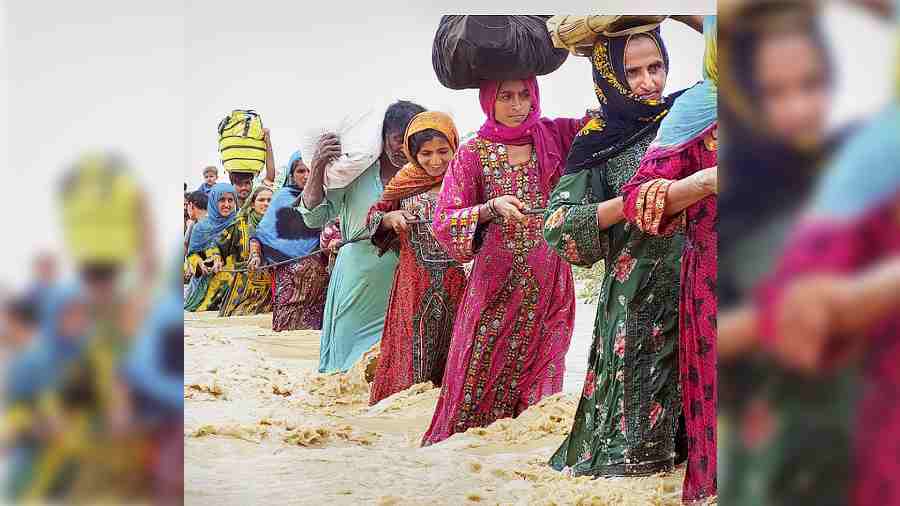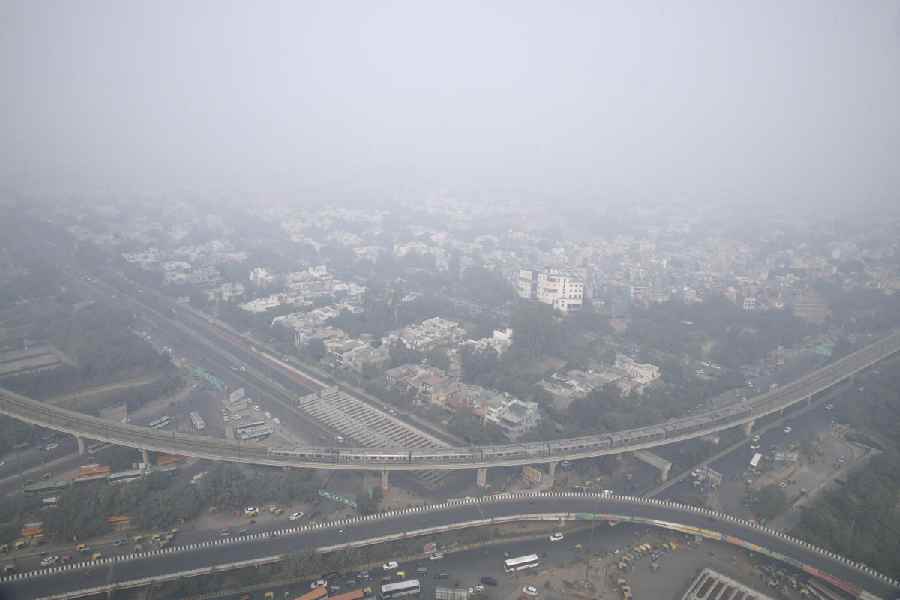Pakistan's Khyber Pakhtunkhwa province on Friday declared a rain emergency in several districts with immediate effect till August 30 after disaster management officials warned that the Swat River has reached "high to very high" flood levels.
The emergency was declared on the recommendation of the district administration and the Provincial Disaster Management Authority (PDMA) after flash floods wreaked havoc in Swat, Shangla, Mingora, Kohistan and other areas.
In a flood advisory issued on Friday, Khyber Pakhtunkhwa's Provincial Emergency Operations Centre said that water flows in Swat River at Khawazakhela point and its tributaries/nullahs had reached high to very high flood levels - 227,899 cusecs - which may result in a dangerous situation for communities living nearby .
Videos circulating on social media show hotels, link roads, suspension bridges, houses, hospitals, schools, mini power stations, and water mills being completely washed away as residents scramble to find refuge.
Torrential rains have triggered flash floods this monsoon season. The floods have wreaked havoc, washing away houses, standing crops, roads, and bridges, besides disconnecting land routes and causing hindrance in the relief operations across the country.
Several global financial institutions have announced USD 500 million in immediate aid to Pakistan where rain-triggered floods have killed 937 people and left nearly 30 million without shelter, prompting the government to declare a national emergency.
Pakistan Prime Minister Shehbaz Sharif appealed to the international financial institutions, organisations and countries for aid to help the flood victims.
In response, World Bank Country Director Najy Benhassine informed the prime minister about the immediate aid of USD 350 million from the World Bank.
The World Bank will also cooperate with Pakistan through a comprehensive plan for the restoration of infrastructure after the estimation of damage, Benhassine said.
The World Food Programme (WFP), a subsidiary of the United Nations, also announced USD 110 million in aid for the flood victims, while the Asian Development Bank (ADB) announced USD 20 million and the UK Aid announced 1.5 million pounds in immediate aid., The Express Tribune newspaper reported.
The UK Aid also announced another 38 million pounds for medium and long-term projects for the rehabilitation of flood victims, the report said.
During a meeting with representatives of the World Bank, ADB, representatives of various United Nations bodies, including the World Health Organization (WHO), and international donors, including China, America and European countries, the prime minister also invited them to visit the flood-affected areas.
According to the National Disaster Management Authority (NDMA), Pakistan received 166.8 mm of rain in August, as opposed to the average of 48 mm - an increase of 241 per cent.
The rains and floods have so far killed 937 people 396 men, 198 women, and 343 children and left 1,293 injured across Pakistan since June 14, it said.
Sindh and Balochistan - the worst-hit regions - witnessed a 784 per cent and 496 per cent increase in the monsoon deluge, respectively, the Dawn newspaper reported.
The abnormal increase in rainfall generated flash floods across the country, particularly in the southern part of Pakistan, which remains inundated with 23 districts of Sindh being declared calamity-hit , the report said.
Sindh province has reported the highest number of deaths with 306 people losing their lives due to floods and rain-related incidents, according to NDMA data.
Balochistan has reported 234 deaths whereas Khyber Pakhtunkhwa and Punjab have recorded 185 and 165 deaths, respectively. In Pakistan-occupied Kashmir, 37 people have died while nine deaths have been reported in the Gilgit-Baltistan region.
Minister for Climate Change Sherry Rehman said on Thursday that a war room has been set up by Prime Minister Sharif at NDMA, which would spearhead relief operations across the country.
She said that the incessant monstrous rainfall had made it hard to carry out relief operations, especially helicopter sorties .
Pakistan is going through its 8th cycle of monsoon; normally the country has only three to four cycles of [monsoon] rain, the minister said during a press conference in Islamabad.
Pakistan is under an unprecedented monsoon spell and data suggests the possibility of re-emergence of another cycle in September, she was quoted as saying by the newspaper.
Senator Rehman, who compared the current situation with the devastating 2010 floods, said the current situation was worse than that.
The water is not only flowing from the north as in 2010, but it is equally or more devastating in its sweep and destructive power, she said.
According to the senator, flash floods caused by heavy rains had swept away bridges and communication infrastructure in various areas of the country.
Almost 30 million people are without shelter, thousands of them displaced and have no food, she said.
Stressing the need for relief from international donors, the minister said that the need for shelter and relief was dire as per what the provinces had conveyed.
Sindh has asked for one million tents and Balochistan has demanded 100,000 tents, she said, adding that all tent manufacturers had been mobilised and external donors were also approached for tents.
The monsoon season runs from July to September in Pakistan. This year monsoon and pre-monsoon rains broke the 30-year record in Pakistan and the NDMA data shows that the 30-year average rain was 130.8 millimeters but the rainfall in the 2022 season was 375.4 mm 187 per cent more.












